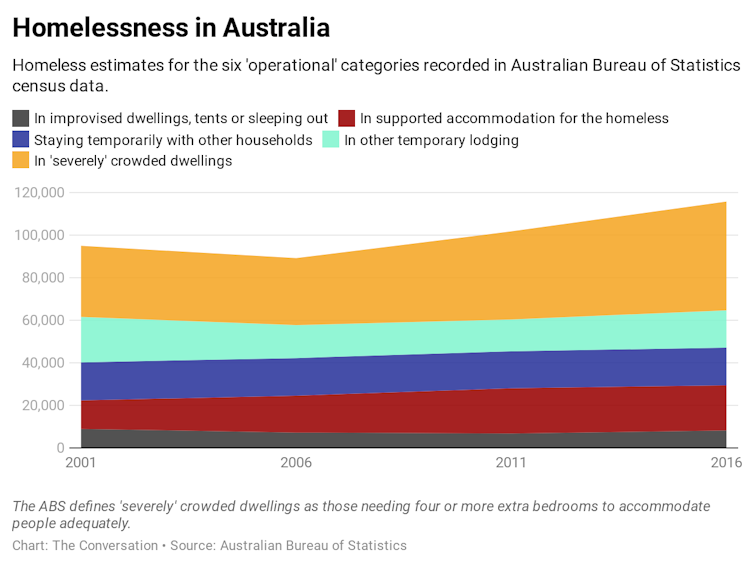PHOTO: Homeless services turn away almost 60 per cent of those who ask for help, with people instead relying on family, or sleeping in cars or on the street. Photo: Vaida Savickaite
The stereotype of a homeless person – those living in tents or sleeping in parks or doorways – is just the visible tip of the much larger crisis of homelessness in Australia.
For every one of about 8,000 “rough sleepers” there about 14 others staying in temporary accommodation or with others in severely crowded dwellings. That’s a total of more than 116,000 homeless Australians, according to Australian Bureau of Statistics census data.
About 60% are under the age of 35, though the number of homeless aged 55 and older has been steadily increasing. About a quarter are women and children fleeing domestic violence.

The causes of homelessness are complex. The stereotype is that it involves mental illness and substance addiction. But the more common denominators are poverty, unemployment and a lack of affordable adequate housing.
Whatever the cause, research by myself and colleagues for the Australian Housing and Urban Research Institute proposes a path forward to reduce, and even eliminate, homelessness in Australia.
To do so requires moving away from treating the problem in an uncoordinated manner at the point of crisis and investing in an integrated system that prioritises prevention, fast rehousing and an adequate supply of affordable long-term housing.
Homelessness soars in our biggest cities, driven by rising inequality since 2001
A historical legacy
Australia’s existing approach to dealing with homelessness is the legacy of a response originating in the 19th century, long before the advent of the modern welfare state, relying on charitable institutions to pick up the pieces of an economic system failing to care for the most vulnerable.
This has resulted in a somewhat chaotic system of small-scale and often disconnected services that are funded to only put a band-aid on the problem. It is mainly oriented towards crisis responses, with limited resources devoted to responding to homelessness once it has occurred, often only providing temporary relief from homelessness.
Federal, state and territory governments provide about A$250 million a year in funding to the 1,500 not-for-profit “specialist homelessness services” – organisations such as Launch Housing and Vincent Care – to provide support services and short-term accommodation in refuges, hostels, motels and caravan parks.
READ MORE VIA DOMAIN














